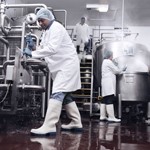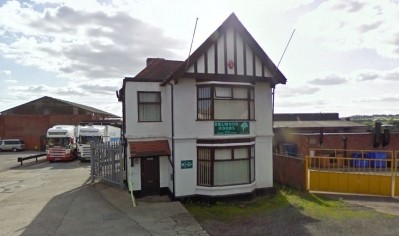Food manufacturing accidents - the biggest causes

- High risk areas
- Tighter regulations
- Conflicts of interest
- Duty of care to contractors
- More risks
In a factory context, ‘maintenance’ and ‘cleaning’ tend to have rather dull-but-benign associations, defined more by what they are not (production) than by what they actually entail.
But, of course, both types of activity are essential for continued productivity and quality. And from a health and safety (H&S) perspective, they are neither dull nor (unfortunately) always benign.
In most food operations, the majority of accidents are relatively minor and typically involve slips, trips, manual handling problems or struck by/struck against-type incidents, says the Institution of Occupational Safety and Health (IOSH). This leaves maintenance and cleaning as the areas where there is the greatest risk of serious injury or fatality.
In fact, from analysing Health & Safety Executive (HSE) figures, chair of the IOSH Food and Drink Group Jackie Wooldridge concludes that one third of fatal injuries in the food industry are associated with these activities the – largest single category. The next highest grouping is driver-related, which accounts for just over a quarter of fatal injuries. As she puts it: “Maintenance will often involve many of the highest-risk activities undertaken on-site.”
High risk areas (Return to top)
More broadly, ‘zero-tolerance’ high-risk areas include equipment such as large palletisers or provers, activities such as working at height (a major problem across industry as a whole) and workplace transport, including lorries and forklifts.
There are also specific risks around refrigeration plants where ammonia is used as a refrigerant, or where there is a cooling tower.
As Wooldridge explains, after a major outbreak of legionella in Scotland two or three years ago, the HSE initiated a positive campaign around the associated risks in cooling towers. As a part of this, it undertook to inspect every single one in the country. There are around 5,000 cooling towers in the UK, she adds, and a large proportion of those relate to food and drink production.
Overall, in terms of predicting and preventing problems, UK factories should be in a better position than ever before. “Plant such as lifting equipment, boilers and pressure systems needs to be inspected regularly by law,” says Wooldridge. “For their part, insurance companies also drive manufacturers to maintain their plant well.”
At the same time, technologies such as thermographic imaging – which shows up 'hot-spots' in electrical installations – are more widely available.
But accidents still happen. Does this mean that, despite all these positive pressures and an improved ‘toolbox’, underlying workplace culture and attitudes to H&S have not really shifted over recent years?
Tighter regulations (Return to top)
At engineering maintenance specialist Brammer, food industry key account development manager Drew Reeves takes the long view. “Compared with the 1980s, when I was an apprentice, regulations are certainly tighter,” he says. “We never had designated walkways in the lorry park, for instance, and people would work on machines when they were still running. You just couldn’t get away with doing that these days.”
Wooldridge at IOSH, who is also head of H&S at 2 Sisters’ Food Group, will not be drawn on how – or whether – she believes approaches have evolved in food and drink. She agrees that, particularly in a chilled food environment, for instance, there are special pressures on staff to minimise downtime. “But H&S is not about stopping people doing things,” she says. “It’s about having the right procedures and culture in place. We can still meet our operational efficiencies, but do that safely.”
IOSH does not believe that the widespread use of transient workers in the food industry needs to constitute a H&S challenge. But at workplace safety equipment and training provider Arco, sector manager for the food industry Andy Johnston makes a direct link between these groups of workers and questions of compliance.
“Where you have temporary or agency workers, they may not be embedded in the safety culture,” he says. So, for example, a company may choose to use full ear defenders rather than ear plugs because it is easier in this case for managers to monitor worker compliance.
However, not all compliance issues arise from workforce attitudes to H&S. In a production environment, a balance of priorities has to be struck involving hygiene, technical and H&S managers working together, says Johnston.
Conflicts of interest (Return to top)
“But in my experience, it tends to be the hygiene or technical functions which drive things, rather than H&S,” he says. “Driven by supermarket standards, it will often be the technical manager who takes precedence. There are often conflicts of interest.”
Equally, given the UK's obsession with colour-coded equipment and clothing, a hygiene manager's insistence on everything being red – for instance – on a particular line or day can mean that the correct specification glove or other piece of equipment is not available.
“Typically, H&S comes in third after technical and hygiene,” says Johnston. “But it’s part of our job to get them round a table to work out a compromise.”
Where safety is judged to require the use of specific equipment, planning and procedures, this should be the result of a formal risk assessment. But a glance at the HSE website shows that accidents happen – in maintenance, cleaning and other situations – even where a risk assessment has been carried out.
So how exactly should they be conducted and followed through?
“The team approach to risk assessment is best,” says Wooldridge. “That team can include managers, the H&S manager and employees, who really know what happens. One of the best questions you can ask anyone is: ‘What’s the problem with this process?”’
At workplace H&S products supplier Slingsby, md Dominic Slingsby says: “A risk assessment should identify how potential accidents can be avoided, any actions to mitigate risks and who is responsible for dealing with it. Once this is completed, for more complicated tasks, it’s worth creating a safety ‘method statement’ that describes how the work should be carried out and outlining the sequence of instructions.”
Duty of care to contractors (Return to top)
Frequently, it will not be the company’s own staff carrying out maintenance. “Contractors will often do higher-risk work,” says Wooldridge. “But we can’t absolve ourselves of our duty of care.” Here again, she says, the ‘risk assessment method statement’ (RAMS) is essential, and should be asked for by the food manufacturer where the contractor is working. “It’s about safe systems of working, with hazards, risks and controls all thought through, and with those controls transferred into specific actions,” she explains.
It goes without saying that planned maintenance is better than the unplanned variety. Operationally, the most obvious reason for this is that it can be scheduled in ‘down’ periods. There is also an unwritten law which decrees that preventative maintenance will always be significantly less costly and time-consuming than any work resulting from a breakdown or crisis.
From an H&S perspective, there are additional reasons why planned maintenance is preferred.
Brammer’s Reeves explains: “For the worker, it means you can standardise routines and workflows to ensure you maintain personal safety.” Those routines should include isolating the machine so it cannot be turned on, displaying signage so other workers know someone is working on the machine, and having the right equipment, parts and tools for the job. Of course, planning also means ensuring it is a trained specialist doing the work in the first place.
Here and in other areas affecting maintenance, there are legal safeguards in place, too. Slingsby says: “Under the Provision and Use of Work Equipment Regulations 1998, any equipment that carries specific risks to H&S should only be used by people who have received relevant training.”
The legal framework also includes the Work at Height Regulations. “This requires all work involving ladders and mobile access towers to be properly planned, supervised and carried out by competent people,” he says.
More risks (Return to top)
Another set of risks associated with maintenance are clustered around working in confined spaces. “This could involve cleaning out vats or tanks, work in roof spaces or in underfloor tunnels,” says Johnston at Arco. “We’ve invested in a lot of training in this area, including in our ‘confined space mobile units’. A lot of companies can’t afford to send people away for training, so we allow them to train on-site. We can adapt the unit to their needs.”
Naturally, the “standardised routines and workflows” that Brammer talks about do not always go according to plan. Or as Wooldridge says: “There’s nothing as certain as change.” Consequently, dynamic risk assessment is an important part of any key worker’s training. As a part of this, they should carry a risk assessment pocket book which includes a checklist for operations never undertaken before, guiding the worker through the thought process.
“At some stage – and this is really important – you have to have the authority and the confidence to say, ‘No, I can’t go any further’, and to seek help,” Wooldridge concludes.















